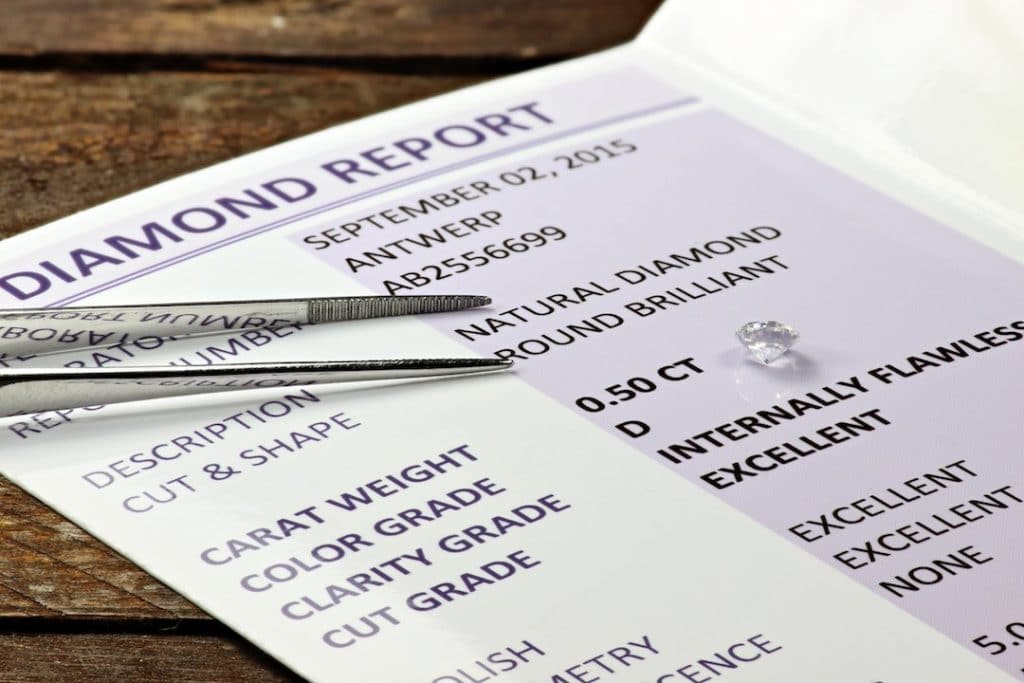When shopping for diamonds, it’s necessary you understand how to rate a diamond. It seems complicated at first if you’ve seen the terminology and don’t know what it all means. You’ll see labels, such as VSI and VSII and wonder what they represent.
Below, we will thoroughly explain how to rate diamonds, so that you will know what these labels and terms mean. We will also explain which characteristics are most important in a diamond and which you can sacrifice on if you’re on a budget and still find a good diamond.
The Diamond’s Cut

One of the fundamentals you should know on how to rate a diamond is what its cut is. Diamond cut is often mistaken for shape because sellers label diamonds as round cut, princess cut, emerald cut, etc. What diamond cut refers to is the level of sparkle as determined by the diamond’s proportions. Various factors of diamond cut include brilliance, fire, and scintillation. How to rate a diamond cut has nothing to do with its shape.
The different factors of diamond cut confuse first time shoppers of diamond jewelry. Brilliance refers to how much light reflects in and out of the gem. Light leakage is minimized by better proportions, allowing the diamond to look brighter. Fire is light dispersion that appears as rainbow colors. Scintillation is the sparkle you see when the diamond is moved.
Cut grades consist of poor, fair, good, very good, and excellent on the GIA diamond rating scale. On the AGS cut grade scale, cut grades comprise poor, fair, good, very good, excellent, and ideal. It’s recommended you buy diamond jewelry with the best cut possible as it’s considered the most important characteristic.
Cut grades are only given for round and princess shaped gems. The better proportioned the cut, the more light the diamond reflects. Quality of the diamond cut impacts the other Cs of the diamond. Well cut diamonds appear larger than they are and can hide inclusions.
The Diamond’s Color
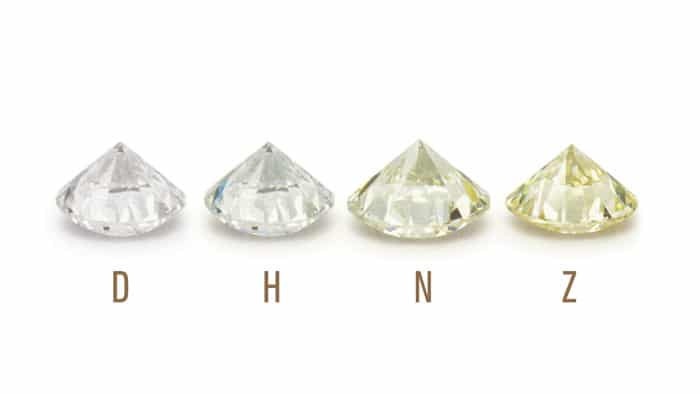
You can save money on diamonds by purchasing one with a lower color quality but ideal cut. The high quality cut makes up for the color not being entirely colorless. Color grades in diamonds range from D to Z with D being colorless and Z being yellow or light brown. Diamond colors D, E, an F are colorless. The next four letters – G, H, I, and J – are near colorless. And K-Z diamonds are considered faint color.
Colorless diamonds are in high demand because they sparkle the most. Light absorption improves the more colorless a diamond is, which is what results in a greater sparkle. Colorless diamonds are rare, so they are sold at a higher price. The color differences between diamonds are difficult to spot. Therefore, diamond color isn’t a characteristic you necessarily need to prioritize.
Understanding the different color grades is necessary for learning how to rate a diamond. Near colorless diamonds appear colorless in the face up position. You can only detect a small amount of body color when they are in the face down position. This is one of the reasons why you can save money on diamonds by buying near colorless instead of colorless. Both types still look high quality.
The Diamond’s Clarity
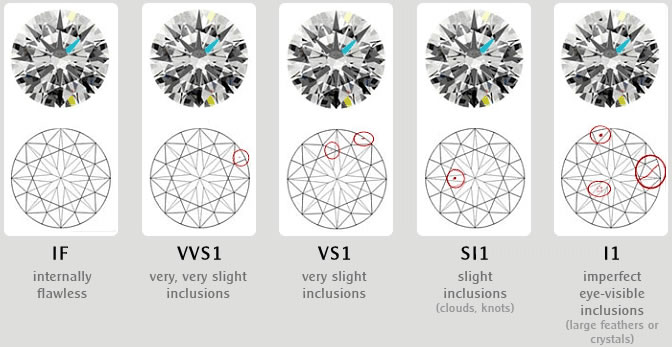
Clarity is the third characteristic you should know on how to rate a diamond. It refers to how many flaws the diamond has. There are six diamond clarity grades: included, slightly included, very slightly included, very very slightly included, internally flawless, and flawless. Inclusions are flaws inside the diamond, such as twigs and pinpoints. Blemishes are flaws on the outside, such as scratches. Almost all diamonds actually have some blemishes, but they’re usually not visible to the naked eye.
Flawless and internally flawless diamonds are rare; less than 1% of diamonds have this clarity rating. These diamonds are free of inclusions up to 10X magnification. Diamonds rated as very very slight inclusions have inclusions that are only detected under 10X magnification. Very slight inclusions don’t have inclusions visible to the naked eye.
For those who want to save money on diamonds, they should consider those rated VSI. Flaws in VSI rated diamonds are only visible under magnification. Slightly included diamonds have flaws that could be noticeable to the naked eye. And diamonds that are included have flaws that are visible. These flaws can affect brilliance and transparency.
The Diamond’s Carat
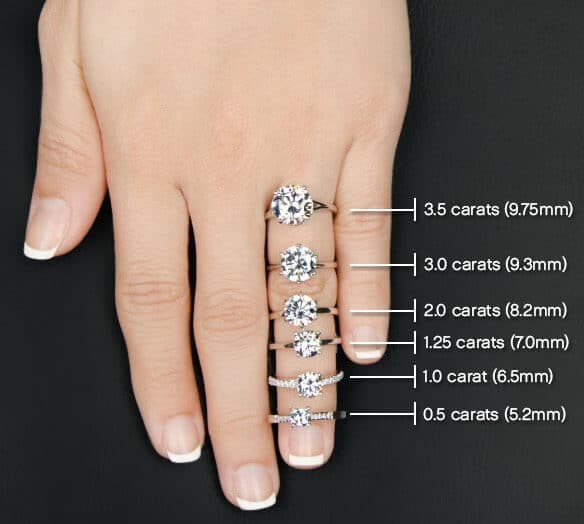
Carat is another characteristic you need to know on how to rate diamonds that often confuses people because it’s a term used in rating gold as well. When it comes to diamonds, carat actually refers to the gem’s weight. For gold evaluation, carat indicates how pure the gold is. It has nothing to do with the gold’s weight.
In general, a diamond’s size increases as its weight does. But remember that’s not always the case. One carat is equivalent to 0.2 grams. The higher the carat number, the more expensive the diamond usually is. This is because heavier diamonds occur more rarely in nature. Many people think carats is the most important characteristic when shopping for diamond jewelry, but that’s not really the case. Carats are only important if you’re looking for a large or expensive diamond.
The Diamond’s Shape
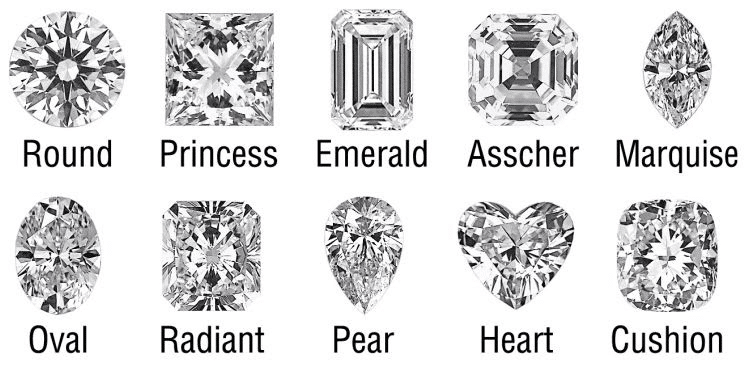
Shape is the most obvious characteristics on how to rate a diamond. As you would think, it refers to the shape of the diamond. This characteristic is only important if you’re looking for a particular shape or a highly valuable diamond. Examples of diamond shapes include emerald, round, square (cushion), princess, oval, marquise, and pear.
Brilliant round cut diamonds are the most popular shape of diamond to buy. But other shapes can look just as beautiful. Round diamonds are the most valuable because they have excellent light refraction properties. According to Brilliance, a diamond seller, “When all else is equal, round cut diamonds are more valuable than alternative shapes.”
Summing Up
The five main characteristics you need to know on how to rate a diamond are cut, color, clarity, carat, and shape. You’ll come across these terms as you shop for diamonds. Once you understand what each characteristic means, you’ll have no trouble finding the right diamond for your needs and budget.
The one quality that you should probably prioritize is cut, especially if you’re on a budget. A diamond’s cut influences its appearance. Well cut diamonds can hide flaws and make the diamond appear larger than it really is.

